Questions? Call Us to speak with a CAD CAM Pro!
Learning CAD CAM for a CNC lathe can be a challenging task, understanding the geometry, creating toolpaths and post-processing can be overwhelming at first. Make sure to join us next week to cover come these barriers letting us help you become proficient in using CAD CAM for lathe programming.
Weekly CAD-CAM Training – Join Us Here
BobCAD-CAM | BobCAM for SOLIDWORKS | BobCAM for RHINO
Learning CAD CAM for CNC Lathes?

What are new programmers’ everyday struggles when learning CAD CAM software to program CNC lathes?
Understanding the geometry:
One of the most critical aspects of programming a lathe with CAD CAM is understanding the geometry of the part. The programmer must understand how the part is shaped, including the angles, curves, and diameters. They must also understand the material and its properties, as this will affect the cutting strategy and tool selection. For new programmers, this can be challenging as it requires a lot of attention to detail and a thorough understanding of the machining process.
Creating toolpaths:
Toolpath creation is another area that new CAD CAM programmers may struggle with. Toolpath creation involves selecting the appropriate tools, defining the cutting parameters, and generating the path the tool will follow to create the desired geometry. This requires a deep understanding of the machine’s capabilities and the different types of tools available. Additionally, creating toolpaths that optimize for tool life, cycle time, and surface finish can be challenging for new programmers.
Post-processing:
Post-processing is the final step in the CAD CAM process, where the toolpath is translated into G-code that the machine can understand. Post-processing involves selecting the appropriate post-processor for the machine and configuring the settings to match the machine’s capabilities. This can be challenging for new programmers, as it requires an understanding of G-code and the different types of post-processors available.
Learning CAD CAM for a lathe can be a challenging task, and some new programmers may find it overwhelming at first. However, with patience, practice, and guidance, new programmers can become proficient in using CAD CAM for lathe programming. It is essential to seek out resources such as online tutorials, training programs, and industry experts to help with the learning process.
Common Types of Parts Made on CNC Lathes:
CNC lathes are highly versatile machines widely used in the manufacturing industry for precision machining. These machines can produce various parts for different industries, making them an essential tool for any CNC business. .
Shafts:
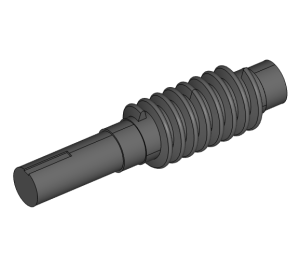
Shafts are one of the most common types of parts made on CNC lathes. These precision components are widely used in the automotive, aerospace, and industrial machinery industries. CNC lathes are ideal for producing high-precision and accuracy shafts of different sizes and materials.
Bushings:
Bushings are another common type of part made on CNC lathes. These components are used in various machinery and equipment and are made from different materials, including metals and plastics. CNC lathes can produce bushings with precise dimensions and tolerances, making them ideal for applications that require high accuracy.
Bearings:
Bearings are critical components in many types of machinery, and CNC lathes are often used to manufacture the precision components used in bearings. CNC lathes can produce bearings with precise dimensions, tolerances, and surface finishes, ensuring optimal performance and durability.
Fittings:
CNC lathes are also commonly used to manufacture fittings for piping and plumbing systems, as well as hydraulic and pneumatic systems. These precision components are made from a variety of materials, including brass, aluminum, and stainless steel, and require high accuracy and precision in manufacturing.
Valves:
Valves are critical components in many types of machinery and industrial applications. CNC lathes are often used to manufacture the precision components used in valves, including valve bodies, stems, and seats. These components require high precision and accuracy in manufacturing to ensure optimal performance and durability.
Pins:
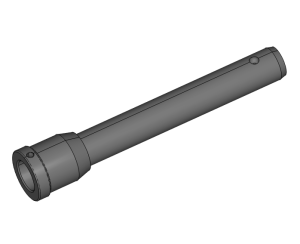
CNC lathes are often used to manufacture precision pins used in a wide variety of applications, including aerospace, automotive, and industrial machinery. These components require high precision in manufacturing to ensure proper fit and function.
Flanges:
Flanges are used to connect pipes and other components in many different types of systems. CNC lathes are often used to manufacture the precision components used in flanges, including the flange faces and bolt holes. These components require high precision and accuracy in manufacturing to ensure proper fit and function.
CNC lathes are versatile machines that can be used to manufacture a wide variety of precision parts for different industries. These machines are ideal for producing parts with high accuracy, precision, and efficiency, making them an essential tool for many businesses.
What are the three most common brands of CNC controllers for CNC Lathes?
The three most common brands of controllers for CNC lathes are Fanuc, Siemens, and Mitsubishi. These brands are widely used in the industry and offer a range of features and capabilities to meet different manufacturing needs.
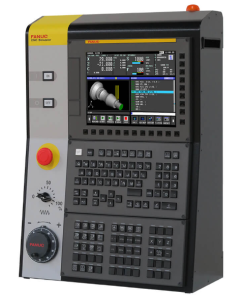
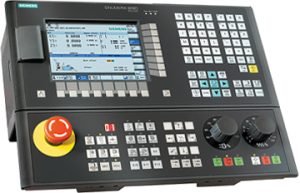
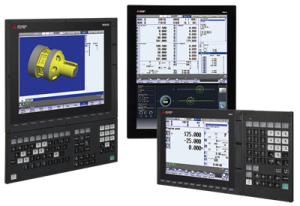
Learning CNC Lathe Controls?
Before learning the fundamentals of CAD CAM for CNC Lathes, it’s best first to grasp the feature and options specific to your controller. Be sure to consider the following resources when learning about your CNC Lathe.
Manufacturer documentation and training materials:
The manufacturers of these controllers often provide comprehensive documentation and training materials on how to program their machines. These resources can be found on their websites or by contacting their customer support.
Online courses and tutorials:
Many online courses and tutorials are available that teach programming for CNC lathes using these controllers. These resources can be found on websites such as Udemy, Coursera, and YouTube.
Technical schools and training programs:
Many technical schools and training programs offer courses on CNC programming that cover these controllers. These programs can provide hands-on experience and practical knowledge that can be applied in the workplace.
Working directly with BobCAD CAM has several advantages over working with a reseller or VAR (Value-Added Reseller). Here’s Why BobCAD-CAM customers choose to work direct.
Better support:
When you work directly with BobCAD-CAM, you have direct access to their support team. This can be beneficial if you encounter any issues with the software or need technical assistance. Working with a reseller or VAR may require you to go through an additional layer of support, which can add time and complexity to resolving any issues.
More direct communication:
When working directly with BobCAD-CAM, you can communicate directly with their development team, product managers, and other key personnel. This can be helpful if you have feature requests, feedback, or questions about the software’s capabilities.
More control over licensing:
Working directly with BobCAD-CAM gives you more control over your licensing options, such as the ability to purchase perpetual licenses. A reseller or VAR may have more limited licensing options or may have different pricing structures.
Faster updates and upgrades:
When you work directly with BobCAD-CAM, you receive updates and upgrades more quickly, as you don’t have to go through an additional distribution layer. This can be beneficial if you want to take advantage of new features or bug fixes as soon as they become available.

Changes applied in recent releases represent a significant saving of programming and machining time; for this reason, we recommend watching all the training videos, attending all of our webinars/training events, read our blogs, and use your online training. BobCAD is constantly evolving, you may be wasting time and money just due to your lack of knowledge.
Thank you all very much and we look forward to seeing you at the next webinar on this topic:
2 Axis Lathe | Getting Started : May 17th @ 1PM
Related Courses:


Getting Started Online Classes – Sign up here it’s Free.
Which toolpath options come with what packages?
Use the toolpath matrix.
Questions? Call Us to speak with a CAD CAM Pro!